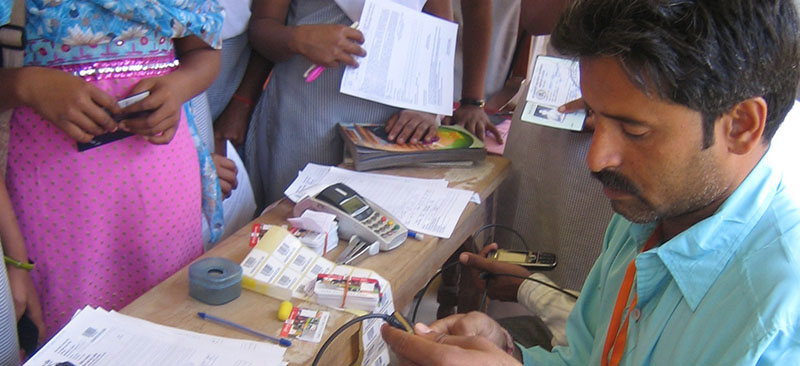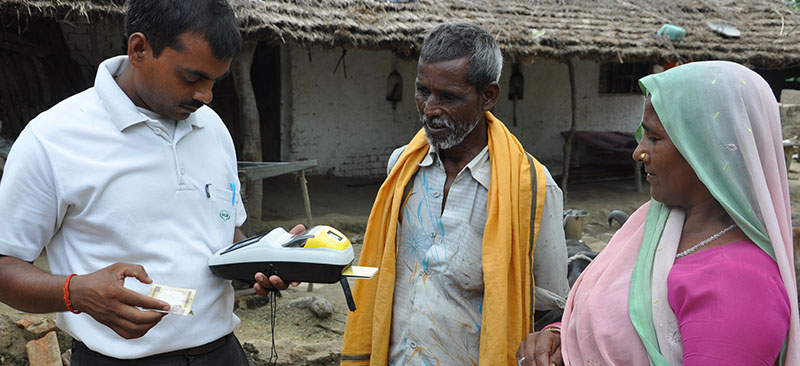M-Shwari, launched in November 2012, it is already receiving much attention for its mobile phone based credit scoring system, and robust growth rate. MicroSave, with inputs from Grameen App Labs, conducted market research to assess customers’ perceptions of and reactions to M-Shwari. From the research, it seems that the savings feature is used by a more upmarket demographic to circumvent the limits on saving on M-PESA; while the small loan facility is accessed by lower income customers. Of all the clients interviewed, only one had been approved for a loan larger than KES 2,500 (US$ 28.74), while all wanted larger amounts, and Safaricom reports the average loan size at around KES 1,000 (US$ 11.49). There is also widespread confusion about the basis on which credit limits are decided by the system. As a result, a great deal of the much-vaunted KES 2.8 billion (US$ 32.2 million) deposited in the first three months may have been as a result of customer depositing and withdrawing to test the system and credit appraisal algorithm. Customers also have a series of specific recommendations to improve the M-Shwari product and these are also outlined in the Note.
Blog
Role of Central Bank and regulatory environment in India
Graham A.N. Wright, Group Managing Director at MicroSave talks about the changing regulatory environment for mobile money in India. He further discusses the approach banks and regulators need to take to achieve financial inclusion in its real sense — offer a range of financial services through the accounts rather than using them as mere pass through accounts for disbursement for government benefits.”
The Case for a Bank Managed Agent Network in the Business Correspondent Model
In 2011, MicroSave examined the two modes of managing agent networks-through outsourced institutional ANMs, and directly through the banks-in the India Focus Notes 76 and 77.1 We arrived at a conclusion that institutional business correspondents were perhaps better suited both from the client as well as from the bankers’ perspective. Most banks in India have also chosen to adopt the institutional business correspondent model. However, some banks have started experimenting with agent networks they directly manage and supervise. In this Note we outline the core incentives to adopt a directly managed agent network. Bank-managed models appear to:
• Help to establish trust amongst clients
• Allow better remuneration of, and thus business cases for, agents
• Meet agents’ expectations of being associated with powerful bank brands
• Have a symbiotic impact on branch business
• Diversify the risk of agent dormancy and churn (which is concentrated with 3rd party institutional network managers)
• Improve the quality of customer service at the agent outlet where they are exclusive agents.
Mobile money – Influencers of success
In this study, we attempt to examine some notable mobile money deployments across the globe.
Aadhaar Enabled Direct Benefits Transfer in Aurangabad
The hugely ambitious, policy initiative of transferring the vast majority of central and state government benefits, entitlements and subsidies, as e-money, directly into the UIDAI Aadhaar linked accounts of the eligible beneficiaries was announced by the Prime Minister of India on the 26th of November 2012 at the first meeting of the National Committee on Direct Transfers.
Given the scope and scale of work involved and the rudimentary state of the agent network, and indeed the technology infrastructure needed, to make G2P happen in India, the work being contemplated is truly massive. MicroSave case studies on barriers and best practices in some of the UIDAI demonstration districts show that front-end processes are usually manual (even where technology could be effectively employed). They involve multiple hand-offs (often between unconnected departments, such as block officials to bank managers in the district, who have virtually have no reporting responsibilities to the district administration); lack clarity on ownership, roles and responsibilities; and have limited opportunities to learn from more optimal solutions that might have emerged elsewhere. The problem is further compounded by significant variations across districts in: (a) the level of maturity and automation (IT or technology enablement) within the state or the district, and within the specific beneficiary programmes; and (b) the motivation and ownership of the officials driving the programmes.
But there are important and laudable successes emerging, which we document in Aurangabad and in East Godavari; although East Godavari is also the site of experiences that highlight some of the many challenges that lie ahead.
Financial Inclusion Just Became More Inclusive…Maybe
On 22 February, the Reserve Bank of India (RBI) announced that companies from any business sector will be allowed to seek a banking license.
A strong part of the rationale behind this controversial and surprising move from India’s generally conservative central bank and regulator is the need to bring more banking services, more efficiently and more quickly, to almost half the country’s 1.2 billion who remain outside the formal banking system .
India’s state banks, currently managing financial inclusion efforts, face increasing difficulties including a deepening shortage of trained staff, particularly in rural areas. Their “business correspondent” agent networks which these banks have set up to manage new accounts and cash-in/cash-out problems have their own long list of complaints. (For a summary and useful links to more substantive analysis, please see MicroSave’s Paint by Numbers: Profiles of Bank Agents in India)
Branch penetration in general is low in India. The world’s second most populous nation has about one-fourth the ratio of branches to adults that Brazil offers. The Philippines, an archipelago with arguably more daunting cash-distribution problems, nevertheless boasts better branch growth in poor and remote areas, according to World Bank data tables.
These and other inclusion issues may or may not concern L&T Finance, Reliance Capital, Tata Capital, and at least seven other finance firms already lining up to apply for bank licenses. The IMF is in fact cautious about the advisability of RBI’s expansion, warning in a recent report on India and banking the risks may outweigh the benefits.
One area these new banking entrants may wish to consider for the ~41% who remain financially excluded are the burgeoning payment technologies available to this very large market, including mobile money transfers and electronic benefits via cards.
Traditionally retail banks have made their money with credit and loans, and by moving customer deposits around to the banks’ short-term advantage. Low-income clients offer little or no opportunity for them to do so, (especially since inactivity and dormancy in savings accounts are often as high as 70-80%, according to MicroSave research).
With the exception of remittances, the minimal profit margins available in most G2P and other money transfers are of little interest to banks.
Finance companies, however, use different business models. And though self-dealing(whereby the new “banking” division overextends credit to another internal group with adverse consequences) is an issue RBI and others worry about, these firms’ greater appetite for risk—and their potential willingness to invest in more expensive, more sophisticated, more reliable digital payment systems—may help serve the needs of India’s poor more effectively than banks have so far.
Who knows? A more corporate business approach with more meaningful incentives may even be able to boost agent profitability and inactivity. The list of agent problems hindering financial inclusion is quite a lot longer, but bank management of agent networks could use help improving these two in particular.
Kenya, the most famously forgiving of regulatory environments, seems to have produced at least one successful alternative to conventional banking for more than 17 million subscribers. India may now accomplish something equally meaningful for their half billion without easy access to financial services.




